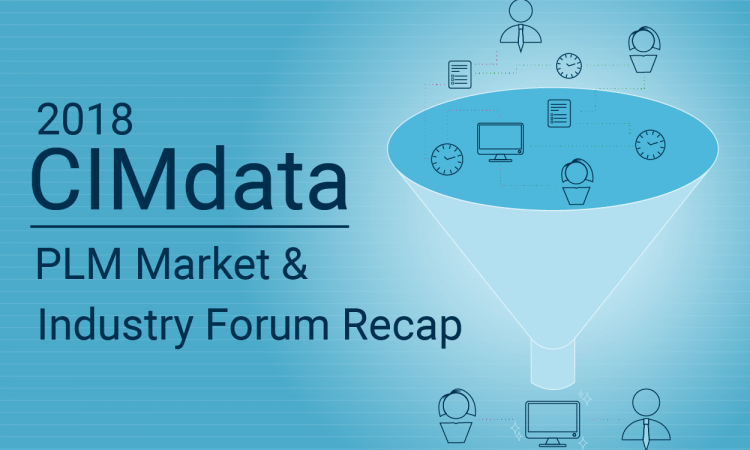A few weeks ago, I had the opportunity to attend the CIMdata PLM Market and Industry Forum to learn the current state of PLM and upcoming trends. CIMdata is the leading independent global strategic management consulting and research authority focused exclusively on PLM and digital transformation. In particular, I noticed three ways that manufacturers are taking advantage of advancements in PLM technology.
#1: ACCELERATE COLLABORATION WITH STRUCTURED INNOVATION
In the first part of the day, CIMdata announced that the PLM market grew by 10 percent this year, an even greater jump than initially predicted. And, the digital manufacturing (DM) sector grew by 8.5 percent with a strong link to Industry 4.0. To me, this rapid growth of PLM and DM indicates a recognition of how these tools connect digital information, helping to create products with greater efficiency, security, and alignment.
Tying into the PLM and DM market growth, the concept of “structured innovation” was an overarching theme throughout the morning sessions. Engineering teams are currently harnessing the power of connected digital technologies for idea exchange and collaboration, which unlocks information and makes it available across the extended enterprise. With enterprise-wide idea exchange, companies are able to take advantage of a much more structured and organized form of collaboration whereas past collaboration was minimal and required extreme administrative burdens. All evidence indicates that implementing and enabling structured innovation and digital technology plays a key role in innovative product design.
#2: THE DILEMMA OF ROI IN PLM
Although PLM tool adoption is still growing rapidly in our industry, many companies still don’t embrace it. Arriving at a defendable ROI for a PLM rollout can be a challenge. CIMdata presenters brought this notion to light, and believe that companies think this way partially because measuring PLM value can be subjective. For example, additional tasks in an engineering team may positively enable downstream teams, but now the engineering team is less efficient.
Companies must convey meaningful, long-term ROI, not just short-term immediate costs. However, this is much easier said than done. In my experience, many engineers don’t always believe saved time or dollar numbers presented by an accounting framework. Some companies identify other “business efficiencies” – I remember one specific case where a company resorted to tracking saved clicks. There could be countless variables that impact how a company sees ROI from PLM tools. The trick is identifying and communicating true business efficiencies, gains in security, accelerated timelines, and product innovation improvements that result from the PLM approach and corresponding technology.
#3: OPTIMIZE PRODUCTS WITH AUGMENTED INTELLIGENCE
After the morning session, CIMdata presented several sessions on augmented intelligence, or technology that acts and reacts based on programmed responses. Digital transformation is becoming a core initiative for most companies—both as an IT approach and a process enablement strategy. Augmented intelligence takes programming and data from digital technologies to improve products.
One of the most interesting sessions to me was about generative design and how it can play a role in revolutionizing product development. In brief, generative design allows engineers to input a desired result and any specific requirements, then the augmented intelligence builds an optimized solution. The solution may simplify parts, eliminate redundancies, and optimize the design beyond what engineers may already consider. These types of digital approaches and technologies make design processes significantly more efficient. Once the design is optimized, companies must still have a clear plan in place for production and manufacturing at scale but the potential is there.
INNOVATIVE PLM TECHNOLOGY SIMPLIFIES COLLABORATION
These three examples all show how the growth in PLM is all about transferring information, communicating, and collaborating easier and faster. New capabilities like digital transformation, IoT, and the digital twin allow for an enterprise-wide conversation–something that is both brand new and will provide extreme value to businesses. As companies leverage digital PLM tools and integrate them into business processes, our industry will continue to see radical change in collaboration capabilities and innovative solutions.



COMMENTS